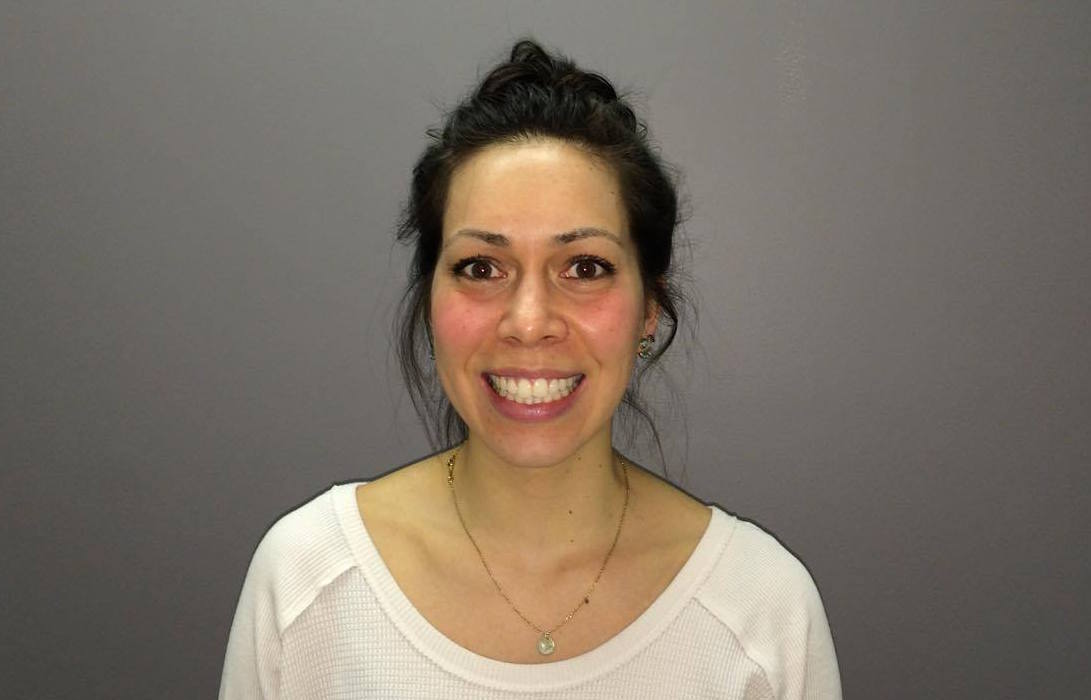Hi there! My name is Kayla, I’m a physiotherapist, wannabe runner, and chocoholic. You can check out my full profile HERE. This is my first article and so I thought I’d start with a short introduction about me. As a physiotherapist, I specialize in studying human movement. As a (former) competitive athlete, I get the opportunity to combine my physio knowledge with active experience!
Up until about 2 years ago, I was a competitive indoor and beach volleyball player spending countless hours on the court and sand getting as many repetitions as I could. A large part of my training involved lifting heavy things around the weight room and working with performance coaches to try to increase the height of my jump, power of my swing, etc. When my volleyball days ended, I still found myself needing an athletic outlet, so I turned to one of my favourite past times — running. It’s been just over a year since I started training and racing and I’ve been really enjoying my experience!
Running and volleyball require very different training approaches. With volleyball, I was exposed to a lot of powerful and explosive Olympic lifting techniques to transfer to the court. When I stopped playing, I no longer needed those quick fast-twitch movements – but I still loved lifting and would find myself itching to go to the gym. So, with my passion for strength training, my physio background, and my new love and addiction to running, I’m combining my interests to find ways of effectively using strength training to improve my performance on the road, track, and trail. Along the way, I’ll be writing articles about strength training and how it can help make us better runners!
TODAY’S TOPIC: CORE STRENGTH
There’s a lot of evidence suggesting that strengthening core muscles plays a very important role in enhancing running performance and preventing injuries to our lower extremities (1,2). A recent systematic review (2) helps to explain the complex interaction between the core and legs.
What does “core” mean? Core refers to the bony and soft tissue structures of our lumbopelvic-hip complex (another term often used is “trunk”) aka: our back, hips, abs, and butt. Our bones and ligaments provide some stability to our lumbopelvic-hip complex, but our active muscle contraction gives much more stability. Core stability is the ability of those muscles to stabilize the spine during muscle contraction and movement. We do this by creating stiffness in this lumbopelvic-hip complex to prepare and respond to movements of our arms and legs, maintain our centre of mass, and to move efficiently.
THE SCIENCE-Y BIT
How does core strength relate to running? Running requires a complex activation pattern of the core muscles with each stride. Core muscle activation is highest when our heel hits the ground. Each time our foot hits the ground, we are standing on one leg creating this moment of force where our leg naturally wants to move toward our midline. Our core musculature tries to counteract this to maintain and stabilize our trunk over the leg that we are standing on and distribute the force from our leg to the pelvis and spine. We do this by creating an opposing “external abduction moment,” or in other words, using muscles to try to bring the leg to the outside of our midline. If those muscles are weak, this results in dysfunction and poor motor control of our lumbopelvic-hip complex, which increases our risk of developing overuse injuries to our knees, lower leg, ankles and feet.
WHAT DOES IT MEAN TO RUNNERS
An article by Niemuth et al. (3) looked at the hip strength of 30 recreational runners with a single leg overuse injury and compared them to a group of 30 non-injured runners. Hip muscle strength was measured in 6 directions. What they found was an association between hip weakness in the abductors and flexors of the injured leg compared to the uninjured side of the injured runners. Basically, the authors observed a specific muscular imbalance between the injured and uninjured sides of injured runners, whereas uninjured runners did not show this imbalance.
The muscles where the imbalance occurred are the exact ones that are needed to provide stability to our trunk every time our heel strikes the ground, suggesting that hip strengthening may provide some role in helping injured runners return to their training as well as injury prevention!
To sum it all up; specific, strategic, custom core strengthening and control can reduce the risk of injury. Not only that, as Dr. Sean Delanghe has written about in the past, strengthening the core can also help to enhance running economy and performance (i.e. here and here).
In my next article, I’ll discuss specific exercises and techniques to target these magical hip abductor muscles!
REFERENCES
- Mucha et al. Hip abductor strength and lower extremity running related injury in distance runners: A systematic review. Journal of Science and Medicine in Sport. 2016.
- Chuter et al. Proximal and distal contributions to lower extremity injury: A review of the literature. Gait & Posture. 2012
- Niemuthet al. Hip muscle weakness and overuse injuries in recreational runners. Clin J Sport Med. 2005

Comments are closed here.